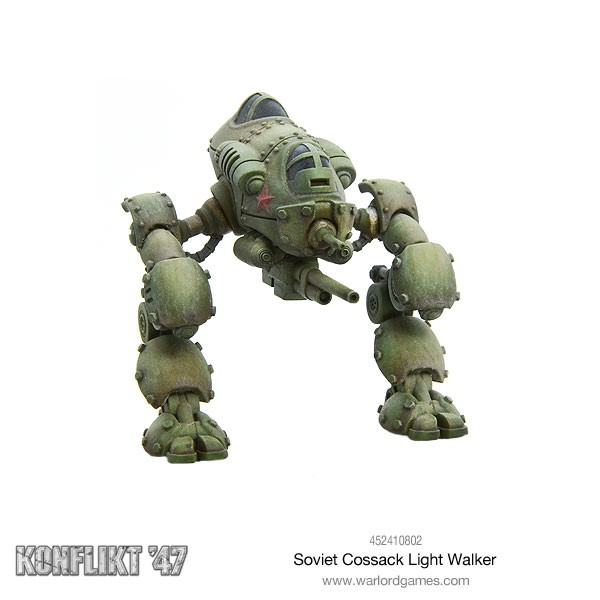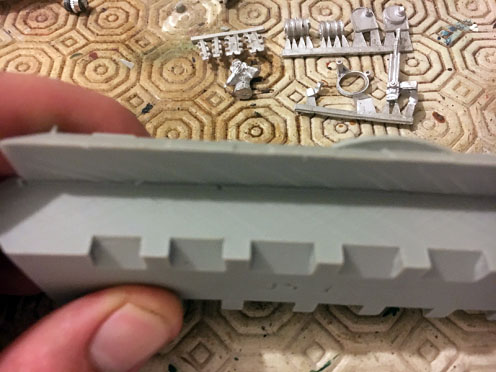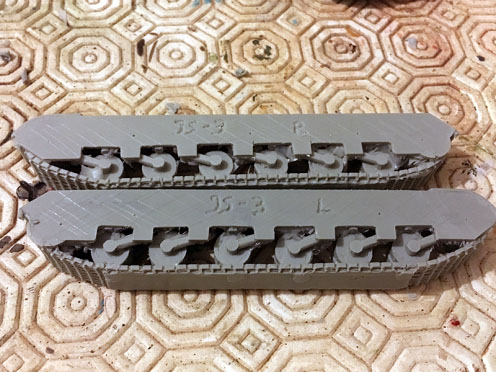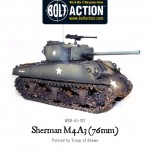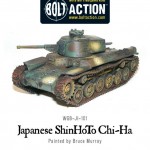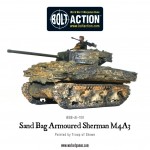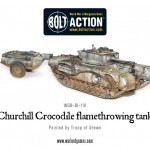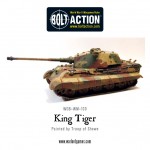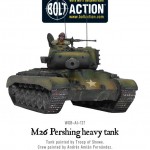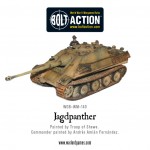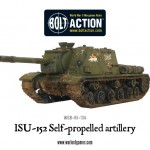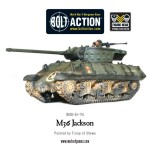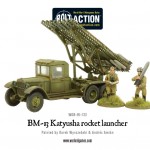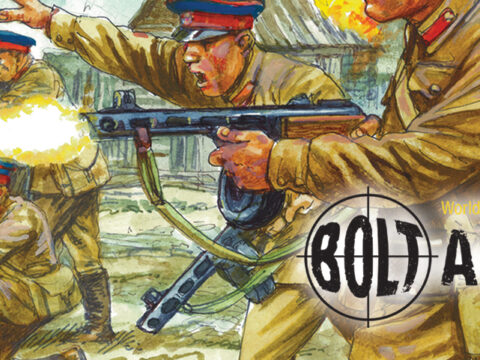From the blog Konflikting Opinions; comes a detailed resin review and a few little tricks!
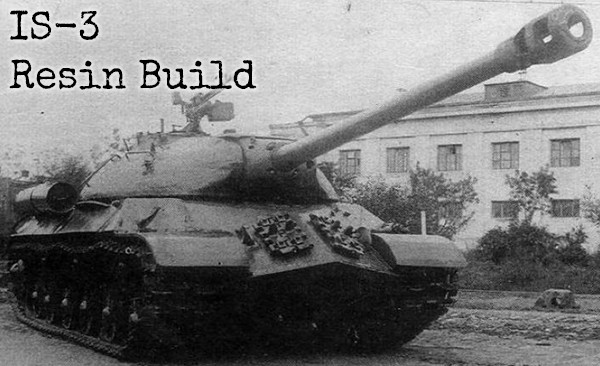 Resin is a very popular casting material due to it’s lightness and capacity for holding sharp and fine details. In recent years many manufacturers have moved from resin to plastics or a hybrid of plastic and resin to create their models. There are, however, a great number of many very good resin kits available on the market and if you’ve never encountered them before, they might throw you a little.
Resin is a very popular casting material due to it’s lightness and capacity for holding sharp and fine details. In recent years many manufacturers have moved from resin to plastics or a hybrid of plastic and resin to create their models. There are, however, a great number of many very good resin kits available on the market and if you’ve never encountered them before, they might throw you a little.
So, if you’ve never put a resin tank together before, this article is for you. It’s a quick 10 minute read on what to look for when you buy your resin models and how to clean them up so they look great on the table and are both safely and robustly constructed.
Before we discuss working with resin, let’s mention safety. I’ve seen plenty of warnings regarding allergic reactions to resin fumes and dust. Personally I think it’s common sense to wear a mask if sanding resin and I always try to ensure that I work on Resin casts in a room that is well ventilated (open windows etc). This is (in my opinion) the best practice for working with resins, glues, spirit or oil based paints and airbrushes anyway. This is especially the case if you share your hobby space with others (as I do with my mini-geek).
I will be using some pictures of the IS-3 by Warlord Games to illustrate my points.
Firstly let’s look at the resin components of the tank.
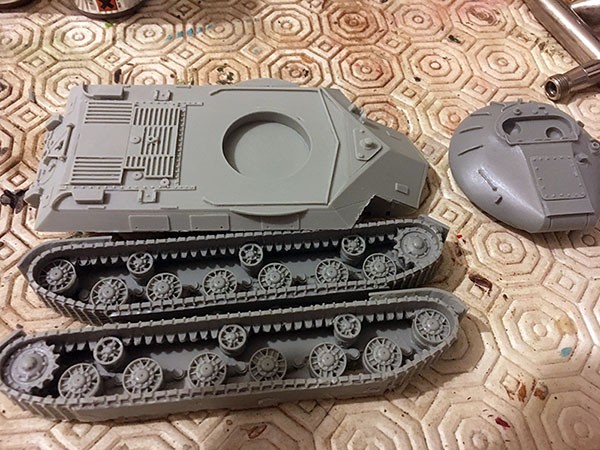
Resin components, note the slight burrs on the front right hand side and the film in-between wheels.
As you can see the castings are really good, with lots of fine detail and only a little flash. You will often see on castings of tracks in particular that there is a very fine film left between the wheels, this is easily cleaned with a scalpel, or a needle file. You will also notice a couple of sharp edges which can be easily smoothed with a scalpel scraped horizontally across the edge to remove the burrs.
You will often find cylindrical pipe offshoots from parts, these are the remains of vents used during the casting process. I normally use a pair of side cutters to get these trimmed back to the surface and then use a scalpel to trim the edge smooth. (I’ve never sanded a resin part). You will see bits like this shortly.
Another funny thing that you will often get whilst working with resin parts is warping. Often precision parts will be slightly warped, and will need fixing to make them attach properly to the model that you’re building.
You can see an example of this with the Track parts of the IS-3 below:
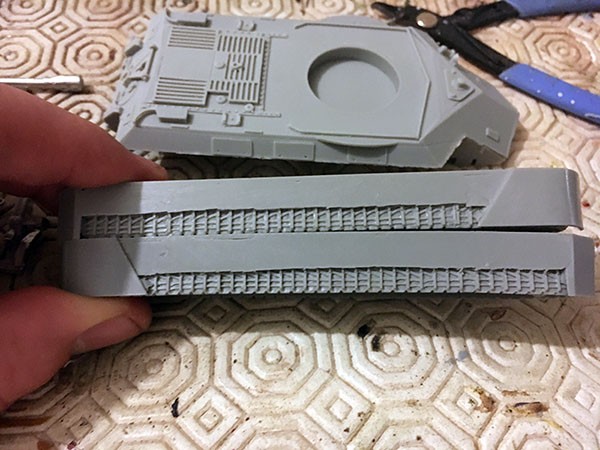
As you can see the lower track piece is slightly warped
This is dead easy to fix, so don’t be worried if you open your resin hobby goodness and find a warped piece. N.B. Yes I could contact customer services and tell them I have a miscast or warped part and I know they’d replace it, but I have a tank to build and hobby to do. I can fix it myself quite easily, why should I wait?
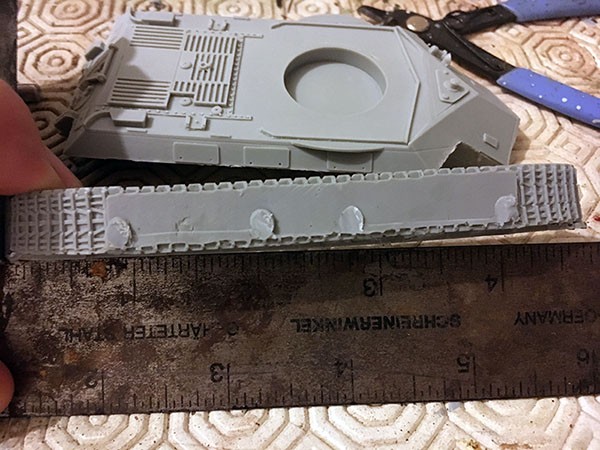 See the cylindrical bits standing proud underneath the tracks? These are vents that can be trimmed and removed.
See the cylindrical bits standing proud underneath the tracks? These are vents that can be trimmed and removed.
Firstly get some very hot water (I boil a kettle of water and leave it to stand for 5 minutes) and pour a little into a large flat dish or bowl. Get the part that’s warped and place it into the water for about 30 seconds to a minute. You want the part to be slightly pliable but not soft.
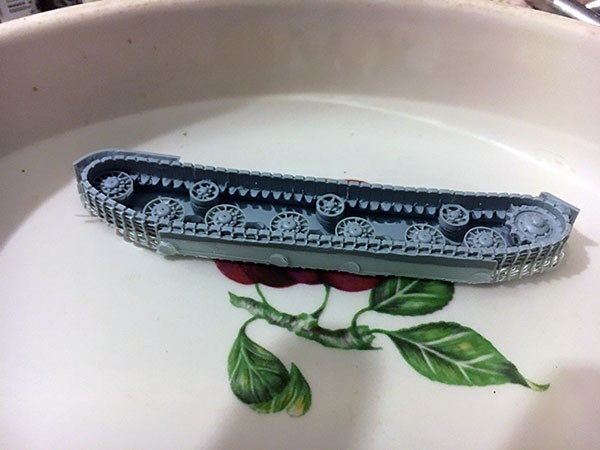 I rested this in very warm water for 30 seconds.
I rested this in very warm water for 30 seconds.
Place the part next to a surface that you know is flat and true, and use this as a guide when you gently push the part flat again.
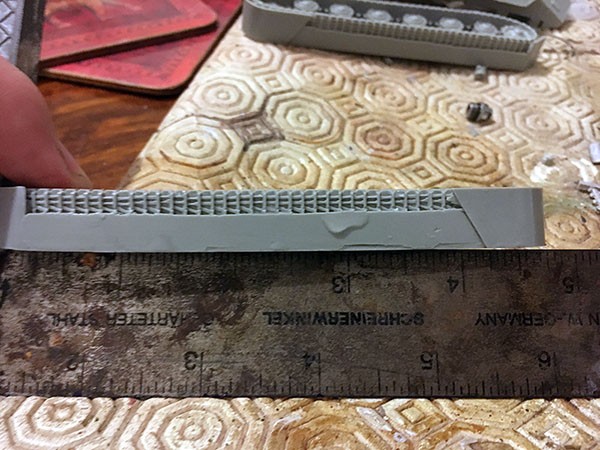 As you can see – it’s now straighter, almost perfect in fact.
As you can see – it’s now straighter, almost perfect in fact.
At this point I could pop it back in the dish for another 30 seconds but I was confident we could fill any tiny gaps and I didn’t want to risk deforming the wheels or fine detail.
Now our tracks are straight and will fit to the model I can spend some time roughing up the surface for the glue. I do this by scoring criss-crossing lines on the areas where superglue will be joining two parts together. You can see this in the pictures below. Obviously, dry fit first so you know WHERE to score. Don’t be over zealous or do this without checking or you then may need to sand/fill visible surfaces smooth again!
Scoring on the hull & scoring on the tracks.
Here’s my IS-3 kit, fully made and ready for primer and paint! I’ll do a full review of the IS-3 kit with painting step by step soon.
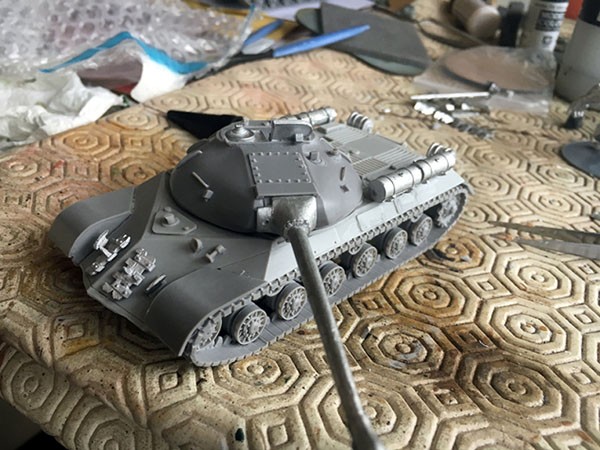
Check out the Konflikting Opinions blog here!
Do you have an article within you? Are you itching to show your collection to the world of Bolt Action? Then drop us a line with a couple of pictures to info@warlordgames.com or share with all over at the Warlord Forum
All set? Get yourself some tanks!
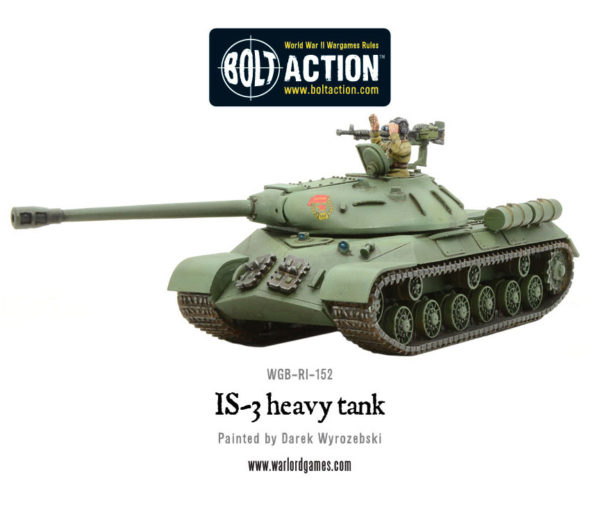
How About a walker?
